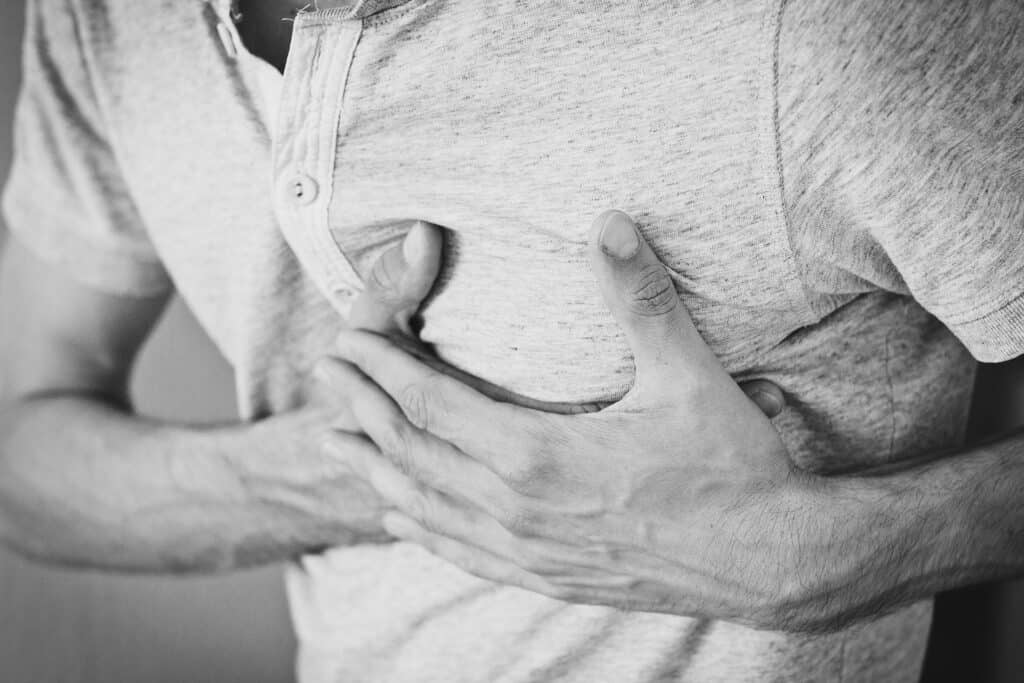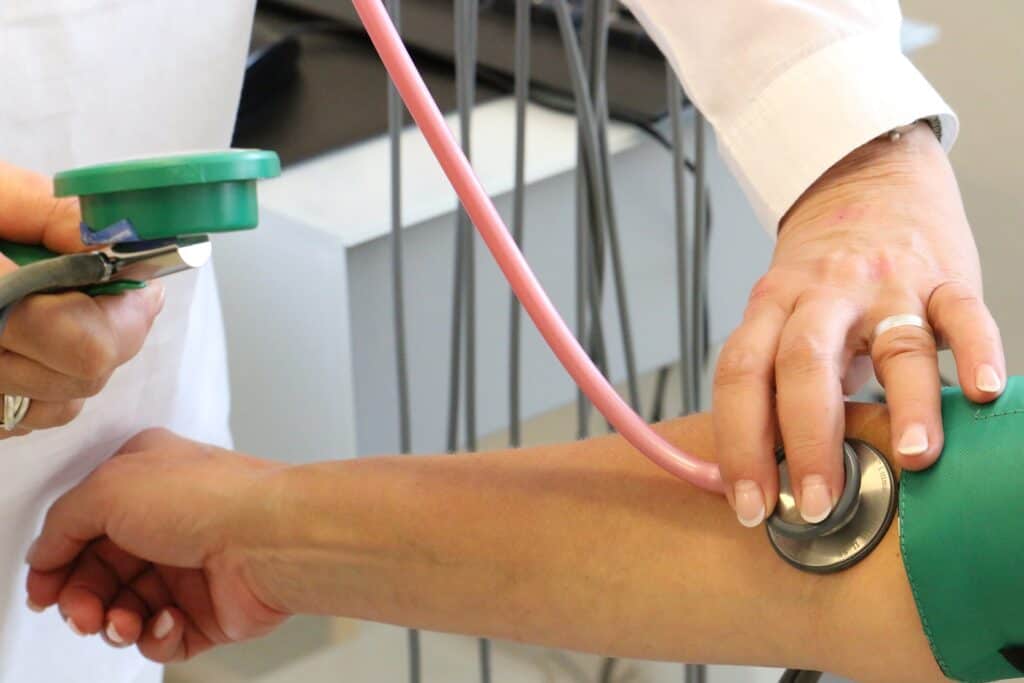THE MEDICAL BLOG
August 16, 2022 – By Dr. Haider Khalid

There are so many Symptoms of High Cholesterol. A unique form of fat – cholesterol – is present in your blood. Some part of it enters your body through the diet. However, most of it is synthesized in your body by the liver (1). Cholesterol serves various purposes in the human body. Most importantly, some hormones, such as androgens, need cholesterol for their synthesis.
Excess to everything is terrible. Similarly, high blood cholesterol causes health problems. High cholesterol can clog your arteries leading to life-threatening emergencies such as stroke and heart attack. Apart from these, several other heart problems and complications can occur due to high blood cholesterol.
According to the Centers for Disease Control, twenty-eight million adults in the US have high cholesterol levels (2). Therefore, you should know the signs to tell if you have high cholesterol in your blood.
What is High Cholesterol?
Cholesterol is not soluble in blood. Therefore, it requires a unique protein for its transport in the bloodstream. These proteins are known as lipoproteins. In terms of cholesterol, lipoproteins are of two major types.
Low-density lipoproteins (LDL) carry the cholesterol from the liver to the tissues for its utilization. The cholesterol present within LDL is known as bad cholesterol. So it is because the accumulation of cholesterol in the form of LDL over the years can lead to medical emergencies like stroke and heart attack (3).
Therefore, having too much LDL cholesterol in the blood is known as ‘high cholesterol. There can be multiple causes of high cholesterol. However, the most common cause of high cholesterol is eating foods rich in fats, such as beef and butter. Moreover, high cholesterol can also occur in patients with a genetic disease, ‘familial hypercholesterolemia’ (4). Patients can have cholesterol levels above 300 mg/dl in this condition.
Fortunately, the body has a defense mechanism in the form of high-density lipoproteins (HDL). HDL helps to carry the excess cholesterol from the LDL and transfer it to the liver for effective elimination from the body. That is why cholesterol present in HDL is known as ‘good cholesterol.
The combination of these two types of lipoproteins maintains cholesterol in the blood. If you have high cholesterol in your blood, it is probably because of high LDL and low HDL levels. Excess cholesterol attaches to the blood vessel walls leading to damage to blood vessels all around the body leading to several complications mentioned later in the article.
What are the Outcomes of High Cholesterol?
According to experts, someone with a history of chronic smoking, obesity, and high blood pressure would be the person of choice to screen for high blood cholesterol. If you have two of these factors, your doctor would probably ask you to have a test for high blood cholesterol.
A cholesterol test is the only way to know if you have high cholesterol. You will be labeled as a patient with high cholesterol once you have cholesterol levels of more than 240 mg/dl (5). According to recommendations, you must ask your doctor for a cholesterol test once you turn 20. After that, you will need a regular evaluation every 4 to 6 years.
Suppose you are looking for a list of symptoms associated with high cholesterol. Then you should end your quest, as there is no definitive way to tell if you have high cholesterol in your body. The only symptoms of high cholesterol are late complications such as stroke and heart attack. These outcomes usually occur due to damage to arteries.
However, in familial hypercholesterolemia, there is the formation of yellowish patches. These patches, known as ‘xanthomas,’ are essential for developing a diagnosis of high cholesterol. Xanthomas can form over the skin or may present as a lump beneath the skin.
Moreover, you need to understand one thing. You would need years and decades of high cholesterol in the blood to develop these conditions. Cholesterol deposits inside the lumen of blood vessels and leads to plaque formation. Plaque clogs the artery, reducing the blood supply to the extremities. This will lead to severe complications that are described here.
Coronary Artery Disease

Coronary arteries are the blood vessels that arise from the proximal-most part of the aorta and supply blood to the heart tissues. Due to their proximity to the heart, these arteries experience more pressure and are susceptible to cholesterol plaque formation.
Coronary artery disease is a heart-related problem in which the blood flow in coronary arteries is restricted. It results in the death of heart tissues leading to poor pumping activity of the heart. If you have high cholesterol in your blood, you are at higher risk of developing this health problem.
But there are some signs through which you can tell if high cholesterol affects your heart health. Chest pain, fatigue, and shortness of breath are the three classical signs showing abnormality in heart health (6).
Peripheral Arterial Disease
The peripheral arterial disease can occur due to the accumulation of cholesterol plaque in the arteries of your body other than coronary arteries. Peripheral arterial disease most commonly affects arteries in the legs and feet. However, kidneys and intestines are also widely involved in this condition.
Fat accumulation in the blood vessels blocks the blood supply to the leg and feet tissues. Loss of blood supply leads to tissue damage that can present with various symptoms. Pain, discomfort, or cramping in the leg muscles are the common symptoms of PAD (7).
You can also experience ‘intermittent claudication’ in which painful cramping of calf muscles occurs after moderate physical activity. Unfortunately, disease progression doesn’t stop here. In later stages, you start experiencing these symptoms even at rest. Moreover, if you ignore these early signs, there are chances that you would leg sores and ulcers, which can then lead to gangrene.
Therefore, you should give great attention to these signs that can tell you if you have high cholesterol in your blood.
Heart Attack
Heart attack is usually the outcome of coronary artery disease. Fat deposition in the coronary arteries leads to their blockage. However, there remains enough blood supply that keeps the heart tissue alive. In some cases, the cholesterol plaque gets dislodged from its original position. Instead, it attaches to some smaller artery supplying a portion of the heart.
Dislodged plaque develops into a thrombus that obstructs a significant amount of blood supply to the heart. According to medical literature, more than 70% of coronary artery obstructions can lead to a heart attack (8). Therefore, myocardial infarction or myocardial ischemia are terminologies that doctors usually use for conditions like a heart attack.
Heart attack is a common health problem all around the globe. According to American Heart Association, the US reports a case of a heart attack roughly after every forty seconds. It is a medical emergency and requires immediate intervention by healthcare professionals. Lack of treatment within the first few hours can lead to the patient’s death.
You should know the signs through which you can tell if you have a heart attack. Chest pain, difficulty breathing, dizziness, palpitation, fatigue, and nausea are some classical symptoms indicating that you might have a heart attack. You need to act fast if you notice any of these symptoms.
Stroke

As discussed before, high cholesterol causes plaque deposition in the arteries. What if the same happens in the arteries supplying an essential body part, the brain? In that case, a stroke can occur, which is a life-threatening medical emergency.
You should immediately call the ambulance if you notice anyone having a stroke. A slight delay in the management of the patient can lead to death. But how would you know that someone is having a stroke? First, you need to be aware of the possible signs someone can experience during a stroke.
In most cases, patients usually present with severe headaches, double vision, dizziness, and loss of balance and coordination (9). However, drooping eyelids, numbness, confusion, and slurring speech can also occur.
How to Tell if You Have High Cholesterol?
We have discussed the possible late presentations of high cholesterol in the blood. But these complications occur late, usually in the sixth decade of life. So then, how would you know for sure if you have blood cholesterol in your blood? The best way to be sure about that is by having a test.
Testing your blood for cholesterol is quite an easy process. First, your doctor will take a sample of your blood and ask you not to eat 12 hours before the testing process. He will then send the sample to the laboratory to have the analysis. A blood lipid profile test usually assesses three fat types: HDL (good), LDL (bad), and triglycerides.
In a broader sense, total cholesterol higher than 240 mg/dl and LDL cholesterol higher than 160 mg/dl will label you as a high cholesterol patient. Moreover, for a healthy health profile, your HDL cholesterol should be higher than 40 mg/dl (10).
Monitoring of High Cholesterol in Blood
American Heart Association recommends screening for cholesterol levels every 4 to 6 years once you have reached 20. However, these guidelines are for those who have normal blood cholesterol levels. But people already diagnosed with high blood cholesterol need more frequent monitoring of their cholesterol levels. Moreover, people with a family history of stroke and heart attack should also monitor their blood cholesterol levels.
How to Lower Cholesterol with Healthy Lifestyle Changes?
If you are someone who wants to manage his blood cholesterol levels without medications, then you are in the right place. Here you will learn about four healthy lifestyle changes that can help you lower cholesterol levels and improve your overall health.
Dietary Modifications
You can manage both LDL and HDL cholesterol levels with the help of your diet. Saturated fats are known to cause an increase in LDL cholesterol. Therefore, you need to avoid foods such as meat, dairy products, and processed meat because they are rich in saturated fats (11). Moreover, you also need to avoid trans-fat-containing foods such as fried foods and fast foods.
Instead, you need to add foods that contain healthier fats, such as unsaturated fatty acids. These include avocados, walnuts, soybeans, and seeds. You also need to avoid refined sugar in your diet. Instead, try to eat whole grains such as whole wheat and oatmeal.
Indulge in Exercise

Exercise can also lead to increasing your HDL cholesterol. Therefore, you should indulge in aerobic physical activity for at least 150 minutes weekly. This makes 30 minutes of physical activity five times a week.
Whenever it comes to exercise, you should start with less physical activity and slowly increase your activity with each passing day. This will increase your exercise compliance and help you gain more results.
Maintain a Healthy Body Weight
Your body weight is directly related to your body weight. If you trim down your weight, you are removing the cholesterol from your blood. Eating healthy and exercising is the best way to maintain a healthy weight.
Quit Smoking
Smoking is evil that damages your health in multiple ways. First, it increases the risk of lung cancer and heart diseases. Another reason to avoid smoking is that it hurts your blood vessels and increases the chances of cholesterol plaque formation.
Become a part of our growing community today at Something Better Today.
The Bottom Line
High cholesterol is a silent condition that damages your health slowly. Therefore, you should look for signs to know if you have high cholesterol in your blood. Symptoms usually develop late. Consequently, regular screening of your blood cholesterol levels would be a much better option. Moreover, it would be best to modify your life by adopting healthy lifestyle habits that can help you improve your overall health.
For more information about how to control Cholesterol levels visit:
References
1. Zhang J, Liu Q. Cholesterol metabolism and homeostasis in the brain. Protein & Cell [Internet]. 2015 Feb 15 [cited 2022 Aug 16];6(4):254–64. Available from: https://www.ncbi.nlm.nih.gov/pmc/articles/PMC4383754/
2. CDC. High Cholesterol Facts [Internet]. Centers for Disease Control and Prevention. 2021 [cited 2022 Aug 16]. Available from: https://www.cdc.gov/cholesterol/facts.htm#:~:text=Twenty%2Deight%20million%20adults%20in
3. Gu X, Yang X, Li Y, Cao J, Li J, Liu X, et al. Usefulness of Low-Density Lipoprotein Cholesterol and Non–High-Density Lipoprotein Cholesterol as Predictors of Cardiovascular Disease in Chinese. The American Journal of Cardiology. 2015 Oct;116(7):1063–70.
4. Bouhairie VE, Goldberg AC. Familial Hypercholesterolemia. Cardiology Clinics [Internet]. 2015 May [cited 2022 Aug 16];33(2):169–79. Available from: https://www.ncbi.nlm.nih.gov/pmc/articles/PMC4472364/
5. Fernández-Friera L, Fuster V, López-Melgar B, Oliva B, García-Ruiz JM, Mendiguren J, et al. Normal LDL-Cholesterol Levels Are Associated With Subclinical Atherosclerosis in the Absence of Risk Factors. Journal of the American College of Cardiology [Internet]. 2017 Dec;70(24):2979–91. Available from: http://www.onlinejacc.org/content/70/24/2979
6. Ambrose J, Singh M. Pathophysiology of coronary artery disease leading to acute coronary syndromes. F1000Prime Reports [Internet]. 2015 Jan 14 [cited 2022 Aug 16];7(8). Available from: https://www.ncbi.nlm.nih.gov/pmc/articles/PMC4311268/
7. Morley RL, Sharma A, Horsch AD, Hinchliffe RJ. Peripheral artery disease. BMJ. 2018 Feb 1;j5842.
8. 2021 Heart Disease and Stroke Statistics Update Fact Sheet At-a-Glance [Internet]. 2021 [cited 2022 Aug 16]. Available from: https://www.heart.org/-/media/phd-files-2/science-news/2/2021-heart-and-stroke-stat-update/2021_heart_disease_and_stroke_statistics_update_fact_sheet_at_a_glance.pdf
9. Hillis AE. Developments in treating the nonmotor symptoms of stroke. Expert Review of Neurotherapeutics. 2020 May 12;20(6):567–76.
10. Lee Y, Siddiqui WJ. Cholesterol Levels [Internet]. PubMed. Treasure Island (FL): StatPearls Publishing; 2020 [cited 2022 Aug 16]. Available from: https://www.ncbi.nlm.nih.gov/books/NBK542294/
11. Grundy MM-L ., Fardet A, Tosh SM, Rich GT, Wilde PJ. Processing of oat: the impact on oat’s cholesterol lowering effect. Food & Function [Internet]. 2018 Mar 1 [cited 2022 Aug 16];9(3):1328–43. Available from: https://pubmed.ncbi.nlm.nih.gov/29431835/

Leave a Reply